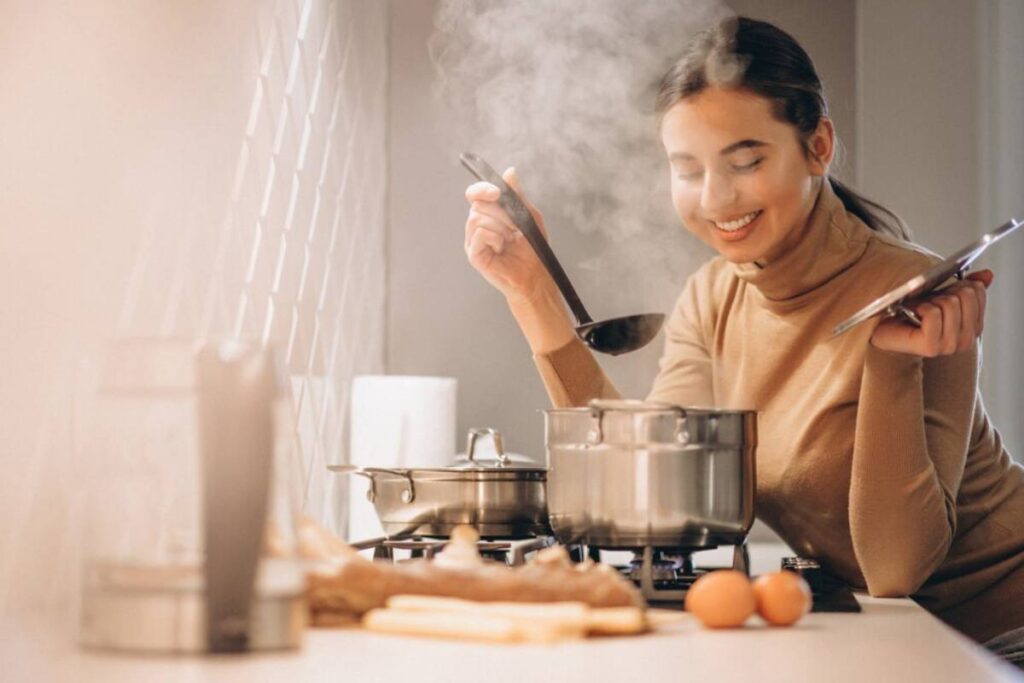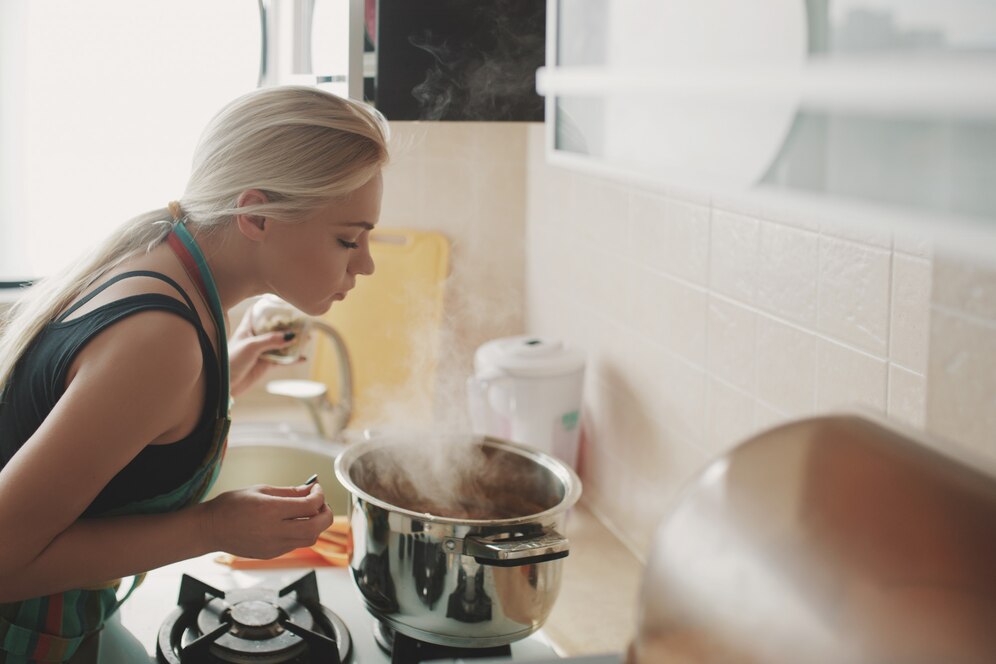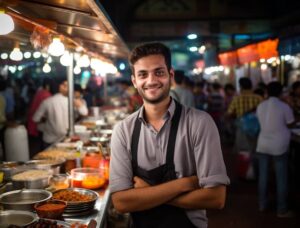The Food Blog

The Science Behind Slow Cooking: Best Global Methods
There’s something deeply comforting about slow-cooked food. Slow cooking boosts the flavour, texture, and aroma of dishes. It works great for a tender pot roast, a rich stew, or a tasty curry. Slow cooking isn’t just tasty; it’s also based on science. It changes ingredients as they cook over time.
This guide will look at slow cooking. We’ll discuss chemical changes, braising techniques, and global methods. These elements help create delicious dishes. You’ll find tips for mastering slow cooking at home. You’ll also explore iconic dishes from around the world.

The Science Behind Slow Cooking
Slow cooking uses low, steady heat for a long time. This helps ingredients break down slowly. This method turns tough meat into tender bites. It also boosts the flavour of vegetables, grains, and sauces.Check these street foods.
Key Scientific Principles of Slow Cooking
- Collagen Breakdown: Tough meats such as brisket, chuck, and pork shoulder contain a lot of collagen. Collagen turns into gelatin at low heat, about 160–190°F (70–90°C). This process gives a rich, silky texture.
- Maillard Reaction: Slow cooking uses low temperatures. However, some recipes call for browning meat first. This starts the Maillard reaction. It’s a chemical process that mixes amino acids and sugars to create complex flavours.
- Moisture Retention: The slow cooking process prevents moisture loss, keeping dishes juicy. The slow evaporation and condensation of liquids in the pot create strong flavours.
- Caramelizing Vegetables: When you cook vegetables slowly, their natural sugars break down. This creates a sweet, mellow flavour. Root vegetables like carrots, parsnips, and onions particularly benefit from this process.
Popular Slow Cooking Techniques Around the World
Braising (France)
Braising is a classic French cooking method. First, you sear meat or vegetables. Then, you simmer them in a little liquid over low heat. The result is tender, flavourful dishes with a rich sauce.
Iconic Dish: Boeuf Bourguignon
- A French stew made with beef, red wine, onions, and mushrooms, braised slowly for hours.
- The long cooking time allows the wine to mellow, creating a luxurious sauce.
Tips for Perfect Braising
- Use a heavy-bottomed pot (like a Dutch oven) for even heat distribution.
- Add aromatic herbs such as thyme and bay leaves for extra depth.
Barbacoa (Mexico)
Barbacoa is a traditional Mexican cooking method. It involves wrapping meat in leaves, like agave or banana. Then, the meat is slow-cooked over an open fire or in an underground pit.
Iconic Dish: Barbacoa Tacos
- Barbacoa meat comes from slow-cooked beef, lamb, or goat. It is tender and juicy. People often serve it with tortillas and salsa.
- The meat is marinated with spices and herbs before cooking, enhancing its flavour.
Tips for Authentic Barbacoa
- Use low and consistent heat for several hours.
- For home cooking, replicate the pit oven effect by using a slow cooker or Dutch oven.
Tagine Cooking (Morocco)
In Morocco, the tagine is both a cooking method and the name of the pot used. The conical shape of the tagine allows steam to circulate, keeping the dish moist and flavourful.
Iconic Dish: Lamb Tagine with Apricots
- Slow-cooked lamb is paired with dried fruits, spices, and nuts, creating a savoury-sweet flavour profile.
- The tagine’s lid helps trap steam, preserving the dish’s moisture.
Tips for Cooking with a Tagine
- Always use low heat to avoid cracking the pot.
- Add preserved lemons and saffron for an authentic Moroccan flavour.
Slow Roasting (United States)
Slow roasting is a popular technique in the US, particularly for meats like pork shoulder, beef brisket, and turkey. The low temperature ensures the meat becomes fall-apart tender.
Iconic Dish: Texas-Style Brisket
- Brisket is slow-cooked for 10–14 hours over low heat, typically with wood smoke.
- The result is a tender, smoky, and flavourful meat with a caramelised crust.
Tips for Perfect Slow Roasting
- Use a low oven temperature (around 275°F / 135°C) for even cooking.
- Let the meat rest after roasting to retain its juices.
Sous Vide (France)
Sous vide is a French slow-cooking method where food is vacuum-sealed in a bag and cooked in a precisely controlled water bath at a low temperature. This technique preserves moisture and creates a perfect texture.
Iconic Dish: Sous Vide Steak
- A tender, evenly cooked steak with a consistent pink centre and a seared exterior.
- Cooking at 130–140°F (54–60°C) results in a perfectly juicy steak.
Tips for Sous Vide Cooking
- Use a precision cooker to maintain a consistent temperature.
- Finish meat by searing it briefly in a hot pan for added flavour.
Best Ingredients for Slow Cooking
Some ingredients work well in slow cooking. Their structure and flavour make them perfect for it.
Meats
- Tough cuts: Beef chuck, brisket, lamb shank, and pork shoulder become incredibly tender with slow cooking.
- Bone-in cuts: Enhance the richness of broths and stews with added collagen and marrow.
Vegetables
- Root vegetables: Carrots, parsnips, and potatoes develop sweet and earthy flavours when slow-cooked.
- Legumes: Beans and lentils become creamy and tender with slow cooking.
Liquids and Aromatics
- Broths and stocks: Create rich, savoury bases for soups and stews.
- Herbs and spices: Slow cooking enhances the release of essential oils, boosting flavour.

Slow Cooking Tips for Flavour Perfection
To get the most out of slow cooking, follow these expert tips:
- Brown meat first: This enhances the dish’s flavour through the Maillard reaction.
- Use fresh herbs: Add herbs like rosemary, thyme, and bay leaves at the start. Finish with fresh herbs for a burst of freshness.
- Don’t overfill the pot: Leave room for steam circulation to prevent soggy dishes.
- Deglaze the pan: Add wine or broth after browning to lift caramelised bits and add depth.
The Culinary Science of Slow Cooking

Slow cooking is more than just a method—it’s a culinary science that brings out the best in ingredients. Cultures worldwide have perfected low and slow cooking. This includes French braising and Moroccan tagine techniques.
No matter if you use a slow cooker, tagine, or Dutch oven, you can bring out amazing flavours and tender textures. Just be patient and precise. Next time you’re in the kitchen, try global slow cooking methods. They can boost your cooking skills.









